The world is all hung up about eco friendliness, and bridging the gap between nature and humanity nowadays. Sometimes its easy to miss it when it already exists; that is before it became an issue.
I’d like to share with you the wonders of the botanical garden that my grandparents in East India posses just a foot outside their doorstep. Through this blog I’ll take you through the 30 or so plants that can be found here.
Blue Aparajita (Clitoria Ternatea)

Origin and general place of habitat:
The Aparajita plant is an herbaceous, climbing twiner that grows attached to other plants. It is characterised by its bright green leaves, and peppy blue flower, that looks like the female reproductive system; it’s where the scientific name of the plant was derived from. The plant grows commonly in all parts of India, Egypt, Afghanistan, Persia, Mesopotamia and Iraq.
Mythological Importance:
In Hindu mythology, the Aparajita flower is closely associated with the goddess Dura, symbolising her strength and power. This flower is believed to hold the goddess’ spirit and is often used in rituals that are honouring her. This flower’s strong blue colour is also connected to Lord Krisha, who is often depicted with a blue skin colour. The flower is considered highly auspicious, and is commonly offered to deities as an offering. This flower, when used in Durga Poojas is believed to bring out her blessings and protection. It is also used in the worship of Lord Shiva and Lord Vishnu.
Medicinal value:
1. Antioxidant Properties:
One of the best benefits of drinking the butterfly pea tea (made from the flower of this plant) is it’s inbuilt antioxidant properties. Antioxidant rich foods and drinks are essential for health as they fight off things called free radicals. Free radicals are the main reason for the premature aging of the body. Free radicals have also been linked to health conditions like diabetes and cancer.
2. Anti Glycation Properties:
Butterfly pea tea has also been proven to have anti glycation properties. Glycation is the damage caused to protein in the skin cells because of sugar molecules and it is one of the main causes of premature skin ageing. Butterfly pea tea prevents this damage.
3. Anti Inflammatory Properties:
Butterfly pea tea has been shown to have anti inflammatory properties. If you are suffering from any inflammations, try consuming a cup of warm butterfly pea tea, it will bring down both the pain and inflammation.
4. Prevents Fatigue:
Butterfly pea tea is very good for people suffering from chronic fatigue as it improves vitality. Since it is rich in vitamins and minerals, it improves immunity and treats chronic fatigue greatly.
5. Analgesic Properties:
This tea has also been proven to have analgesic properties (pain relieving properties).
6. Anti Diabetic Properties:
This tea is amazing for diabetic patients as it helps regulate blood sugar levels. A cup of blue butterfly tea taken in between meals will help regulate blood sugar levels and will keep your blood sugar levels steady till the next meal. This also closely links to the anti-glycation properties of the tea.
7. For Reducing Stress & Anxiety:
Butterfly pea has been used for reducing stress and anxiety from ancient times. If you are stressed or anxious and finding it difficult to sleep, try consuming blue butterfly tea regularly for a few days. It will help you relax and get a good night’s rest. It also helps improve brain function and memory.
8. Anti Asthmatic Properties:
Butterfly pea tea has anti asthmatic properties. The whole plant decoction is usually given for treating all respiratory problems like cold, cough, fever and phlegm. It has amazing bronchodilating properties so if you are suffering from asthma consider taking this tea.
9. For Hair & Skin:
Any ingredient that is rich in antioxidants is amazing for hair and skin. Since this tea is also rich in many vitamins and minerals it even more effective for preventing premature ageing of the skin and hair. You can also use the tea for external application too. Mix it while making homemade face packs to get a glowing skin.
10. Anti Ulcer Properties:
This tea has a soothing effect on our stomach and helps treat stomach ulcers. Ulcers are a sore that are slow to heal, or keep returning. In the stomach, it is when the acid eats away the lining too much in a specific place, leaving a painful area. The whole plant extract has been used for treating ulcers traditionally but the tea made with the flowers also has anti ulcer properties.
This is due to presence of flavonoids in the flowers. If you are suffering from stomach ulcer, I would suggest taking this tea without adding any lemon juice.
Noyontara (Cape periwinkle)
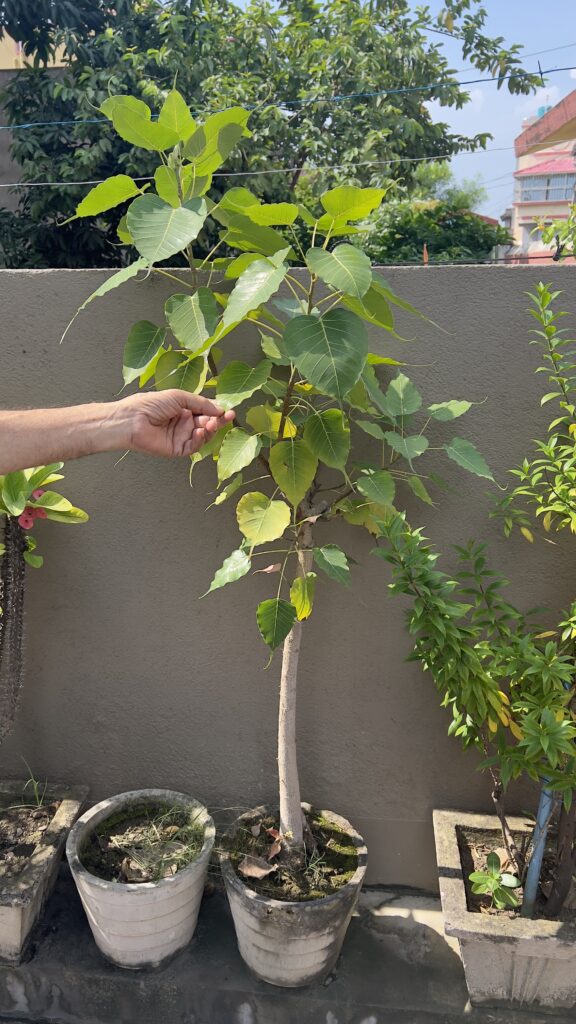
Origin:
Noyontara is an annual or perinnial semi-woody herb, achieving a height of 30-90 cm. Sem and shoots are reddish and juicy. Although the plant is native to Madagascar, it is found to be growing throughout the world. The flowers of Sadabahar usually come in two varieties, one dark pinkish-purple and the other milky white. The flowers bloom in March or April. Alba variety has white flowers, Atropurpurea has purple flowers, and Alboplena bears white flowers. Periwinkle is a rich source of medicinal compounds.
Medicinal value:
- It may have the property to reduce bacterial and viral infections.
- It may have the property to reduce inflammation.
- It may have antitumour properties.
- It may have the ability to lower blood glucose levels.
- It may have the potential to manage blood pressure.
- It may have a hypocholesterolemic effect.
Just take a look at the nutritional components per 100g of this plant’s leaves:
| Nutritional components | Value per 100 g |
| Energy | 354 kCal |
| Protein | 5.2 g |
| Fat | 3.3 g |
| Fibre | 2.4 g |
| Calcium | 340 mg |
| Iron | 27 mg |
| Vitamin C | 0.02 mg |
The Noyontara plant is also an anti-cancer plant because it contains certain alkaloids, carbohydrates and phytochemicals like vincristine, vinblastine and vincardine.
Regulates Diabetes:
The excellent hypoglycaemic property of Noyontara plays a significant role in alleviating blood sugar. The production of insulin from the β-pancreatic cells becomes active in taking this flower extract. It helps to reduce the breakdown of starch into glucose which in turn leads to low blood glucose levels.
Ways To Use Noyontara For Diabetes:
- Dry, powder fresh sadabahar leaves and store it in a glass container. Take 1 tsp of the dried leaf powder by infusing it with water or fresh fruit juice on an empty stomach every morning to keep diabetes under control.
- Chew 3-4 leaves of the Sadabahar plant throughout the day to prevent sudden blood sugar spikes.
- Boil freshly plucked Sadabahar flowers in water. Allow it to steep and then strain. Drink this bitter liquid early morning on an empty stomach to manage diabetes.
Aids Respiratory Abnormalities:
Noyontara, an effective Ayurvedic remedy, addresses various aggravating disorders. Its active constituents provide an ultimate solution for respiratory issues such as asthma, bronchitis, cough, and cold symptoms. Additionally, Noyontara aids in clearing mucus deposits from the respiratory tract, offering relief from sore throats and cough. Something which is a very common issue patients in Inda face during the monsoon seasons.
Improves Cognitive Functioning
Noyontara is a traditional remedy to increase the brain power. The antioxidants and flavonoids present are proven to improve the memory capacity, concentration, calmness, focus and alertness of an individual. Being a brain tonic and stimulator, people that consume extracts of Noyontara are rewarded with improved memory, problem solving capabilities, and other improved brain functions. The neuroprotective elements in the plant not only prevent the loss of memory by slowing the early aging of brain cells, but also allow proper blood circulation in the brain tissues and relieve the tension from the brain.
Improves Skin Health
The plant is also full of alkaloids and skin-improving chemicals. Noyontara helps treat oxidative free radicals damage, which can also be due to exposure to Sun rays. This plant can also prevent the premature aging of the skin, which includes delaying wrinkles, fine lines, spots, dark circles etc. It is also highly effective against bacterial skin infections, like eczema and acne and pimples.
Speeds up Wound Healing
Noyontara, rich in antimicrobial and healing properties, effectively promotes wound healing and prevents skin infections. The soothing effects of the flower extract not only alleviate itching and burning sensations but also aid in disinfecting wounds or bites, preventing further infection spread. For faster healing, create a paste using turmeric and Noyontara leaves, applying it to the wounds 2-3 times a day
Peepal Tree (Ficus Religiosa)
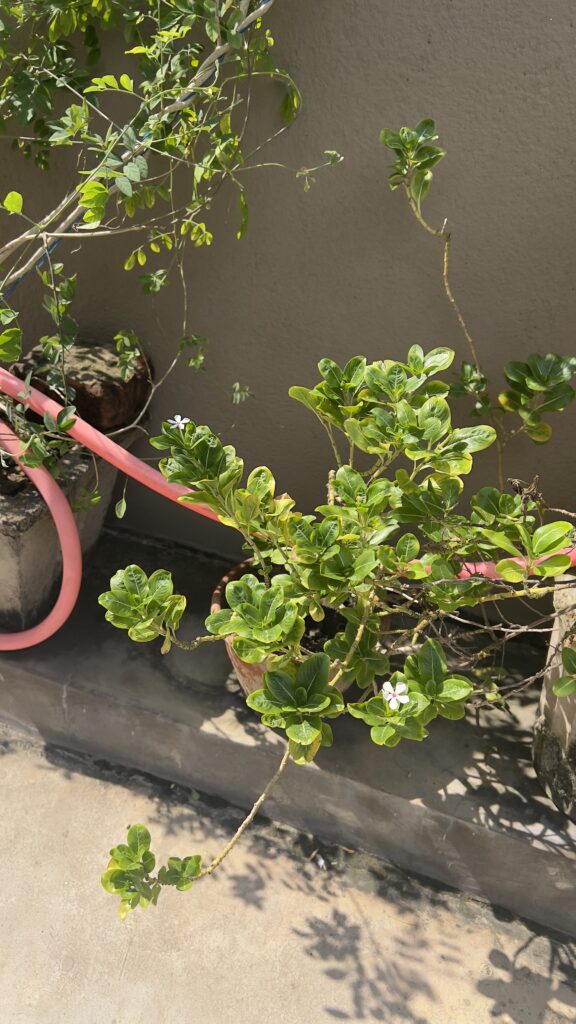
Native to India and Nepal, the peepal tree (Ficus religiosa) is a species of fig tree revered for millennia in Hinduism, Buddhism, and Jainism. Often planted near temples and other sacred sites, the tree is distinguished by its large, broad leaves and characteristic aerial roots. Peepal trees can soar up to 30 meters in height and have lifespans stretching over several centuries. Celebrated not just for their spiritual significance, these trees also possess medicinal properties; their leaves and bark are utilized in Ayurvedic medicine to treat various ailments. Owing to their exceptional oxygen-producing capabilities, they are affectionately dubbed “living oxygen.”
The peepal tree bears figs that start off green and mature into a purple-black hue upon ripening. These fruits are approximately half an inch in diameter, circular, and compressed, typically growing in pairs. In India, the tree blossoms in February, sets fruit by May or during the summer, and the figs ripen in the rainy season. New foliage emerges in April. Consuming the ripe fruits is believed to alleviate burning sensations and enhance poor appetite.
Botanically intriguing, the figs are classified as false or multiple fruits because they house numerous flowers and seeds within a single enclosure. Pollination is orchestrated by fig wasps, which infiltrate the fruit’s crevices to find suitable sites for egg-laying.
Renowned for their resilience and longevity, peepal trees thrive across a broad spectrum of soils and climates. Their drought tolerance enables them to survive even in regions with minimal rainfall.
Medicinal Value:
Peepal Leaves
The juice from peepal leaves can be extracted by gently heating them near a fire, making it useful as an eardrop. These leaves are also beneficial for treating constipation. Additionally, peepal leaves serve as fodder for camels and elephants and can be used for decorative purposes.
Peepal Bark
Peepal bark has notable healing properties. A powder made from the bark is effective in treating old wounds, while the bark itself can reduce inflammation and glandular swelling in the neck. It is also used to produce a reddish dye.
Roots of Peepal Tree
The roots of the peepal tree are highly beneficial as well. They are useful in treating stomatitis, healing ulcers, and promoting the formation of granulation tissue. The roots are also effective against gout and are even chewed to prevent gum diseases.
Fruit
The fruit of the peepal tree offers numerous health benefits. It acts as a laxative and aids digestion, helps control vomiting, and is beneficial for conditions like foul taste, thirst, and heart diseases. Often consumed in powdered form, the fruit is also advantageous for individuals with asthma.
From a scientific perspective, beyond its religious and spiritual significance, the peepal tree remains exceptional. According to Vrikshayurveda by Surapala, it is believed to be the only tree that releases oxygen continuously, 24 hours a day.
The air that filters through the peepal’s leaves is said to destroy bacteria and germs, reinforcing its role as a natural purifier. Historically, many villages planted several peepal trees within their boundaries for this reason. Remarkably, sitting beneath a peepal tree is believed to rejuvenate brain cells.
Krishna Kamal (Passiflora)
The Krishna Kamal, or passion flower vine, produces stunning white blooms crowned with calyxes in shades of purple, blue, or pink, making it one of the most captivating flowering plants for any garden.
The flower itself is intricate, measuring about 10 cm in diameter, with five sepals and petals that appear similar, both whitish in color. These are topped by a corona of blue or violet filaments, five greenish-yellow stamens, and three purple stigmas.
According to the Hindu epic Mahabharata, the flower holds deep symbolic meaning:
- The approximately 100 blue petals represent the Kauravas.
- The five yellow stamens in the center symbolize the five Pandavas.
- The green bulb at the center represents Draupadi, the queen of the Pandavas.
- The three filaments stand for the holy trinity of Brahma, Vishnu, and Shiva.
- The radial design in the center is said to represent the Sudarshan Chakra of Lord Krishna.
Everything about this flower—the color, fragrance, shape, vine, and leaves—is unique and enchanting.
The name “passion flower” is said to derive from its corona, which resembles the crown of thorns worn by Jesus Christ during the crucifixion, symbolizing His suffering on the cross. For this reason, it is also known as the “crown of thorns.”
Additionally, the flower bears a resemblance to a rakhi, the symbolic thread sisters tie on their brothers’ wrists during the Raksha Bandhan festival in India, representing a sister’s love.
Medicinal Value:
Traditionally, passionflower has been used as a calming herb to treat anxiety, insomnia, seizures, and hysteria. A decoction made from passion flower has also been effectively used to treat bronchial asthma. Early research suggests that an extract of passion flower may be beneficial in alleviating menopausal symptoms.
Tulsi (Ocimum Tenuiflorum)
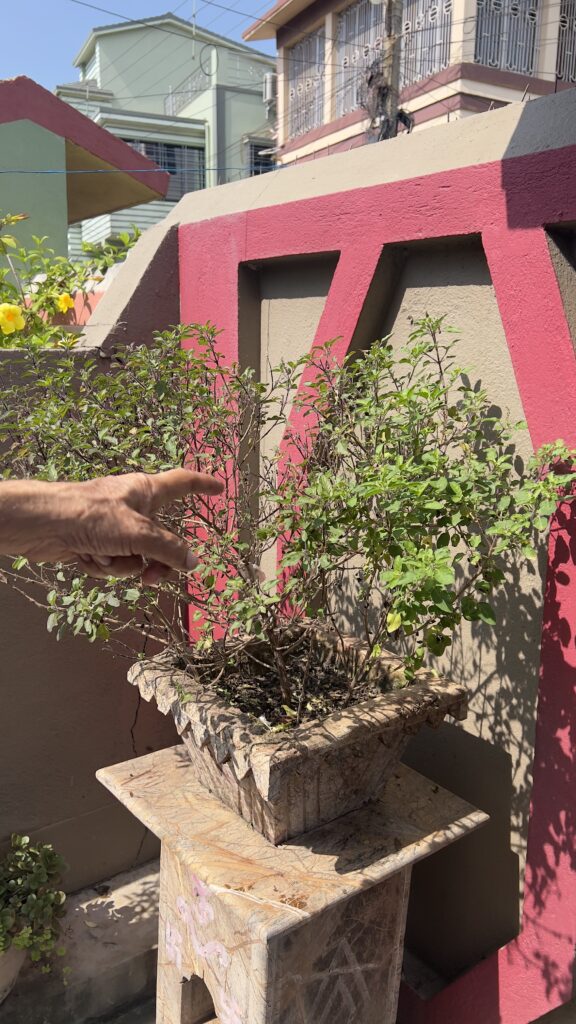
Ocimum Tenuiflorum, commonly known as holy basil or tulsi, is revered in both medicinal and spiritual traditions. It comes in two main varieties: Krishna Tulsi, which has darker, almost black leaves, and Rama Tulsi, which features green leaves. The name “Tulsi” is derived from Sanskrit, meaning “the incomparable one.”
Tulsi has a long history in medicine, with its therapeutic uses dating back to 4000–5000 B.C. References to tulsi can even be found in the Rigveda, which dates back to 3500–1600 B.C. Known as the “queen of herbs,” tulsi holds a significant place in traditional practices.
A member of the Lamiaceae family, Ocimum tenuiflorum is an aromatic perennial plant native to tropical and subtropical regions, including Australia, Malesia, Asia, and the western Pacific. It is widely cultivated throughout the tropical regions of Southeast Asia.
Tulsi is grown for religious, traditional medicine, and essential oil purposes. It is a common ingredient in herbal teas and is prominently used in Ayurveda. Within the Vaishnava tradition of Hinduism, tulsi plants or leaves are integral to worship practices. The plant thrives in warm, tropical climates and grows with a fragrant aroma. It reaches a height of 30 to 60 cm at maturity, with several branches.
Tulsi leaves are simple, elliptic to oblong, with obtuse or acute tips and entire or slightly serrated margins. They grow in pairs opposite each other and are highly aromatic, measuring up to 5 cm in length. The flowers of the tulsi plant are small and purple, arranged in elongated racemes within close whorls. The fruits are tiny, and the seeds are reddish-yellow.
Tulsi, or Tulasi leaves is the most important leaf and flower used in pujas and prayers dedicated to Lord Krishna. Tulsi acts both as a flower and leaf and in most temples it is also offered as ‘prasad.’ It is also known as Krishna Tulsi – a dark variety of the plant.
Medicinal Value:
| Nutritional Content | Amount per 100g serving |
| Calories | 22 |
| Total fats | 0.6 g |
| Total Carbohydrates | 2.7 g |
| Dietary fibre | 1.6 g |
| Sugars | 0.3 g |
| Protein | 3.2 g |
| Sodium | 4 mg |
| Potassium | 295 mg |
- Boosts Metabolism
Tulsi may help regulate blood sugar levels and enhance metabolic rate, which can be beneficial for weight management. However, it’s crucial to incorporate tulsi into a holistic lifestyle that includes a balanced diet and regular exercise for optimal results.
- Reduces Inflammation
One of the significant benefits of holy basil tea is its ability to reduce inflammation. It can soothe pain, diminish swelling, and alleviate symptoms associated with arthritis and other inflammatory conditions, contributing to overall well-being.
- Supports Weight Loss
Tulsi may aid in weight loss by boosting metabolism and potentially curbing cravings. However, for the best results, it should be part of a comprehensive approach that includes a healthy diet and regular physical activity.
- Enhances Digestion
Tulsi has carminative properties that help relieve bloating, gas, and indigestion, promoting smoother digestion and improved gut health. By easing digestive discomfort, tulsi contributes to overall well-being.
- Improves Oral Health
Tulsi’s natural antibacterial properties can combat bad breath, reduce plaque buildup, and support overall oral hygiene. These benefits help maintain healthy teeth and gums, contributing to a confident smile.
- Protects Against Infections
Tulsi’s antiviral and antibacterial properties strengthen the immune system, helping to fight off infections like the common cold and flu. Regular consumption of tulsi may enhance your body’s natural defenses.
- Promotes Wound Healing
Tulsi is known for its wound-healing properties, aiding in tissue regeneration and infection prevention. Traditionally, tulsi leaves have been used to speed up the healing process, supporting the body’s natural recovery.
- Improves Skin Health
Tulsi offers numerous benefits for the skin, including combating acne and soothing irritation with its antibacterial and anti-inflammatory properties. Rich in antioxidants, tulsi may also help reduce signs of aging and protect the skin from damage.
- Lowers Cholesterol Levels
Research suggests that tulsi may help lower bad cholesterol (LDL) levels and increase good cholesterol (HDL) levels, thereby supporting heart health and promoting a healthy cardiovascular system.
- Boosts Hair Health
Tulsi’s antioxidants and essential oils nourish the scalp, promote hair growth, and combat dandruff. By enhancing scalp health and potentially encouraging hair growth, tulsi contributes to overall hair vitality and beauty.
Small Palm Tree
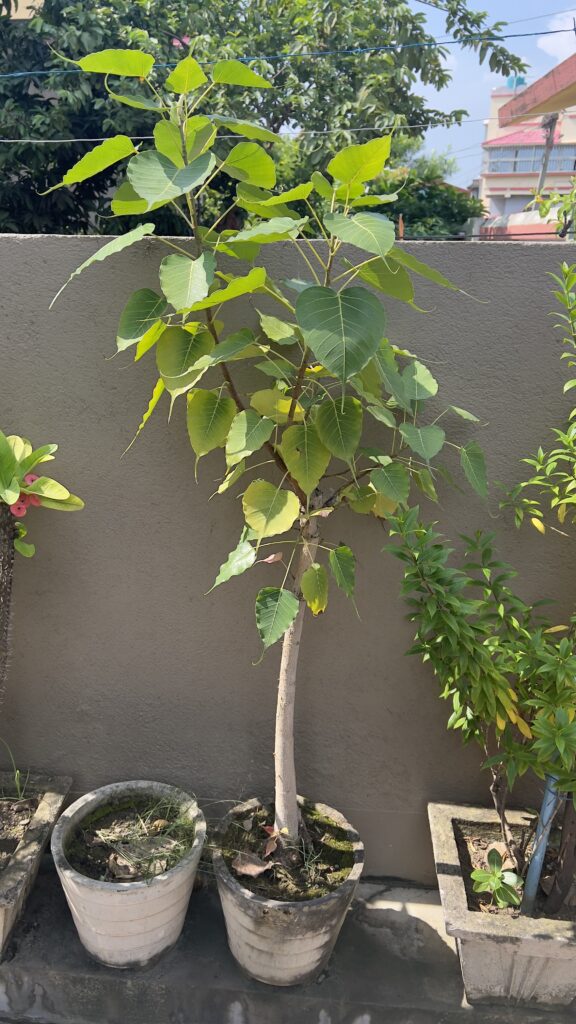
Palm trees are iconic symbols of tropical and subtropical regions, belonging to the diverse Arecaceae family. With over 2,500 species, palm trees vary greatly in size, shape, and habitat, making them a common sight in landscapes around the world.
Beyond their beauty, palm trees hold cultural significance and play important ecological roles. Their large, fan-shaped or feather-like leaves are typically arranged in a spiral pattern, creating a striking and symmetrical appearance. This unique foliage, along with their tall trunks, makes palm trees instantly recognizable and highly valued in tropical and subtropical landscapes.
Palm trees thrive in a wide range of environments, from deserts to rainforests, which has allowed them to spread globally. Some species, like the coconut palm (Cocos nucifera), are especially important economically, providing products such as coconuts, palm oil, and construction materials. Their versatility for both ornamental and practical uses has made them integral to many cultures worldwide.
Culturally, palm trees are often associated with paradise, relaxation, and leisure. The image of palm-fringed beaches evokes feelings of tranquility and escape, making them a popular symbol in vacation destinations. Additionally, palm trees hold significant meaning in various religious and cultural traditions, often representing resilience, longevity, and victory.
Ecologically, palm trees are crucial for supporting biodiversity. Their fruits, leaves, and trunks provide food and shelter for a variety of organisms, including insects and birds. Some palm species are considered keystone plants, meaning they have a significant impact on their ecosystems, influencing the distribution and abundance of other species.
While palm trees are admired for their beauty and utility, concerns have arisen about the environmental impact of large-scale palm oil plantations, which can lead to deforestation and habitat loss, affecting wildlife and local communities. This highlights the importance of sustainable practices in palm tree cultivation.
Palm Tree Habitats:
- Tropical Regions: Palm trees thrive in warm climates with consistent temperatures, especially in tropical rainforests, which are home to a rich diversity of palm species.
- Subtropical Zones: Some palm species can also grow in subtropical zones, where they tolerate slightly cooler temperatures, often in coastal regions and islands.
- Arid and Desert Environments: Certain palm species, like the date palm, are adapted to survive in arid and desert environments, where they can withstand high temperatures and limited water.
Value of Palm Trees:
- Fatty Acids in Palm Oil: Palm oil, derived from certain palm fruits, is rich in fatty acids like palmitic acid, oleic acid, and linoleic acid, making it a versatile ingredient.
- Antioxidants: Palm fruits contain antioxidants such as vitamin E and carotenoids, which help neutralize free radicals in the body, offering potential health benefits.
- Carbohydrates: Edible parts of some palms, like the heart of palm, contain carbohydrates, providing a valuable source of energy.
- Minerals: Palm fruits and other edible parts may contain essential minerals like potassium, magnesium, and phosphorus, contributing to their nutritional value.
- Phenolic Compounds: Certain palm species contain phenolic compounds with antioxidant and anti-inflammatory properties, enhancing the plant’s resilience and offering health benefits.
- Fiber Content: Parts of the palm, like the husk or coir, are rich in fiber and are used in making ropes, mats, and soil conditioners.
- Phytochemicals: Palms produce various phytochemicals, including terpenes and flavonoids, which may have medicinal properties and help the plant adapt to different environments.
- Alkaloids: Some palm species contain alkaloids, compounds that can have diverse effects on the human body and are often studied for their potential medicinal uses.
- Tannins: Present in certain palms, tannins have astringent properties and may play a role in the plant’s defense mechanisms.
- Resins and Latex: Some palms produce resins and latex, substances that serve protective functions for the plant and have been historically used by humans for various purposes.
Madhumalti (Combretum indicum)
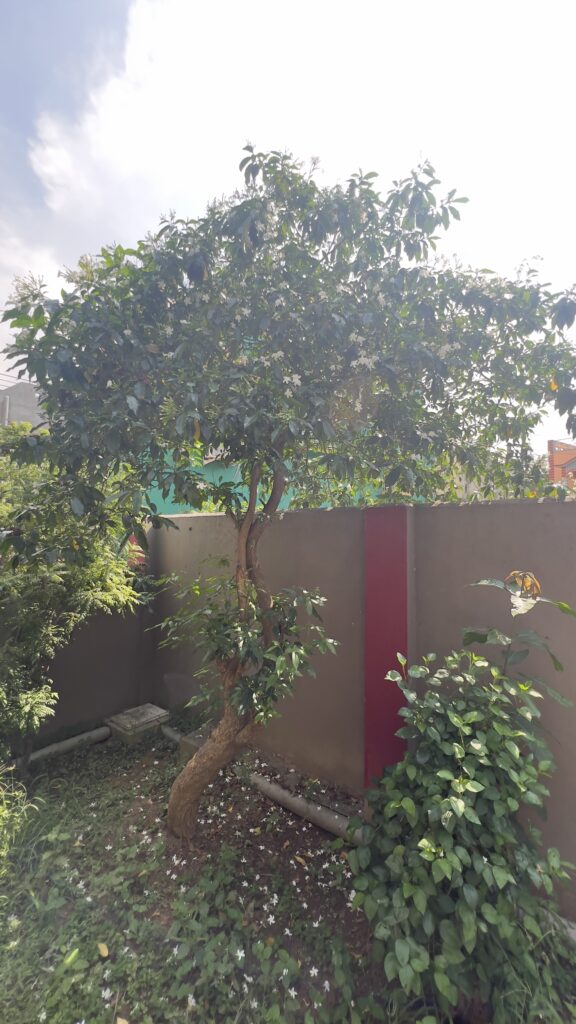
Combretum indicum, commonly known as the Rangoon creeper or Burma creeper, is a vine native to tropical Asia, found in thickets, forests, and along riverbanks across the Indian subcontinent, Malaysia, and the Philippines. It has since been cultivated and naturalized in other tropical regions such as Burma, Vietnam, and Thailand.
The vine is known for its fragrant, tubular flowers that change color as they age—a characteristic believed to attract a wider range of pollinators. The flowers start as white, opening at dusk to attract hawkmoths. By the second day, they turn pink, and on the third day, they become red, drawing in bees and birds. This transition is accompanied by a change in the flower’s orientation, from a horizontal to a drooping position.
Madhumalti (another name for Rangoon creeper) is easy to grow, thriving in various soil types, from sandy to loamy. It requires full to partial sunlight and regular watering. The plant can be propagated through seeds or cuttings and is known for its rapid growth.
Medicinal Value:
- Respiratory Health: Madhumalti has been traditionally used to treat respiratory issues like cough and asthma. The plant contains alkaloids with bronchodilator properties, which help relax the airways, reducing asthma and cough symptoms.
- Skin Health: This plant is beneficial for treating skin conditions such as eczema, psoriasis, and infections. Its anti-inflammatory and antimicrobial properties help reduce inflammation and prevent bacterial growth.
- Digestive Health: Traditionally, Madhumalti has been used to treat digestive problems like constipation, diarrhea, and dysentery. The plant’s tannins and astringent compounds help reduce inflammation and promote healthy bowel movements.
- Immunity Booster: Madhumalti contains antioxidants that help boost the immune system, protecting the body against various diseases and infections.
- Anti-Cancer Properties: The plant has phytochemicals with anti-cancer properties that may help prevent the growth and spread of cancer cells.
- Anti-Inflammatory Properties: Madhumalti’s anti-inflammatory properties make it effective in reducing inflammation and swelling, particularly in conditions like arthritis and gout.
- Anti-Bacterial Properties: The plant’s antibacterial properties help prevent the growth of harmful bacteria, making it effective in treating bacterial infections such as urinary tract infections and skin infections.
- Anti-Fungal Properties: Madhumalti also has antifungal properties, which help prevent fungal growth, making it effective against infections like ringworm and athlete’s foot.
- Cardiovascular Health: This plant supports cardiovascular health by reducing cholesterol levels and preventing blood clot formation, thereby lowering the risk of heart disease.
- Anti-Diabetic Properties: Madhumalti contains compounds that help lower blood sugar levels, making it beneficial in preventing and treating diabetes.
Champa (Plumeria Rubra)
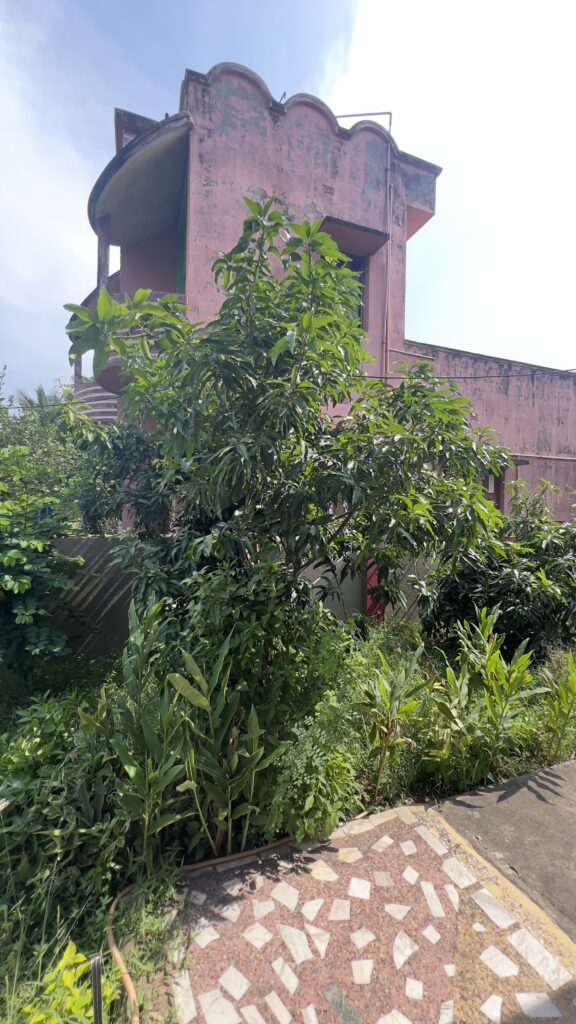
Plumeria Rubra, commonly known as the temple flower of India, holds a special place in religious offerings due to its remarkable properties. This tall and popular variety of the Champa flower can grow up to 20 feet and produces clusters of red, pink, and white flowers. A perennial summer plant, it is best known for its captivating fragrance, which is rich, fruity, and intensely floral. The plant begins to bloom a few years after planting, typically covering the tree with aromatic blossoms by late June.
Medicinal Value:
- Blood Purification: A few drops of extract from the Champa flower can help purify the blood by eliminating germs.
- Aromatherapy: Using a diffuser, you can create a blissful and aromatic atmosphere by gently spraying water mixed with a few drops of Champa flower oil.
- Healing Massage: Champa essential oil is excellent for aromatherapy. A gentle massage with this oil can stimulate the mind and body, enhancing overall well-being.
- Sleep Aid: Applying a few drops of the oil to your belly button can promote peaceful sleep and relaxation.
- Rheumatic Pain Relief: A decoction of the plant’s root mixed with coconut oil can be used to massage joints, reducing pain and inflammation associated with rheumatism.
- Fever Reduction: The bark and leaves of the Champa flower can be used to make a decoction that helps bring down high fevers.
- Migraine Relief: Essential oil extracted from the plant serves as an astringent and can relieve acute migraine headaches. It also stimulates the circulatory and nervous systems.
- Skin and Hair Care: The plant’s extracts can be applied to the face for smoothness and to the hair to promote growth.
- Skin Itch Relief: Dried Champa flowers can be ground into a fine powder, which can provide quick relief from skin itching and eczema when applied topically.
Tagar (Valeriana Wallichii)
Tagara (Valeriana Wallichii), also known as Valeriana officinalis, is a powerful herb with numerous benefits, particularly in treating neurological, psychological, and digestive disorders. In small doses, Tagara calms the mind, strengthens the nerves, and prevents convulsions. It’s commonly used to address insomnia, epilepsy, and paralysis. With its analgesic and anti-inflammatory properties, Tagara is also beneficial for managing osteoarthritis and rheumatoid arthritis. Additionally, it acts as an appetite stimulant, carminative, and antispasmodic, making it effective in relieving abdominal pain, gas, bloating, and loss of appetite. Tagara improves heart muscle strength and reduces blood pressure, which is why it is included in Ayurvedic medicines for hypertension.
This medicinal plant belongs to the Valerianaceae family and is widely known as valerian. It is used across the world, particularly in China, Europe, and the Middle East. The name “valerian” comes from the Latin word Valere, meaning “well-being” or “health.” The plant features rhizomes, roots, and stolons that may be fragmented, and there are about 200 species of Tagara found in Asia, Europe, and North America.
Medicinal Value:
According to Ayurvedic practices, Tagara powder and its formulations are beneficial for treating the following conditions:
Internal Uses:
- Vata and Kapha imbalances
- Facial paralysis
- General paralysis
- Insanity
- Epilepsy
- Osteoarthritis
- Rheumatoid arthritis
- Gout
- Hypertension (high blood pressure)
- Whooping cough
- Asthma
- Loss of appetite
- Abdominal pain
- Constipation
- Hepatitis
- Jaundice
- Ascites
- Splenomegaly
- Dysuria (painful urination)
- Impotence and erectile dysfunction
- Dysmenorrhea (painful periods)
- Skin diseases
- Erysipelas (skin infection)
- Chronic fever (for breaking the fever and treating chronic fatigue)
- Malaria (for reducing fever and treating debility)
Medicinal Properties:
- Vata pacifier
- Kapha pacifier
- Analgesic
- Anticonvulsant
- Nootropic and cognitive enhancer
- Sleep inducer
- Digestive stimulant
- Antispasmodic
- Cholagogue (promotes bile discharge)
- Hepatic stimulant
- Cardiac stimulant
- Anti-asthma
- Diuretic
- Aphrodisiac
- Strengthening tonic
- Bitter tonic
- Febrifuge (reduces fever)
- Retinoprotective (supports eye health)
External Uses:
- Applying a paste made from Tagara powder can help alleviate pain and prevent infections in conditions such as:
- Bone fractures (reduces pain)
- Joints affected by rheumatoid arthritis
- Wounds (promotes healing; a hot infusion of Tagara can be used to wash wounds)
Rose Plant (Rosa Centifolia)
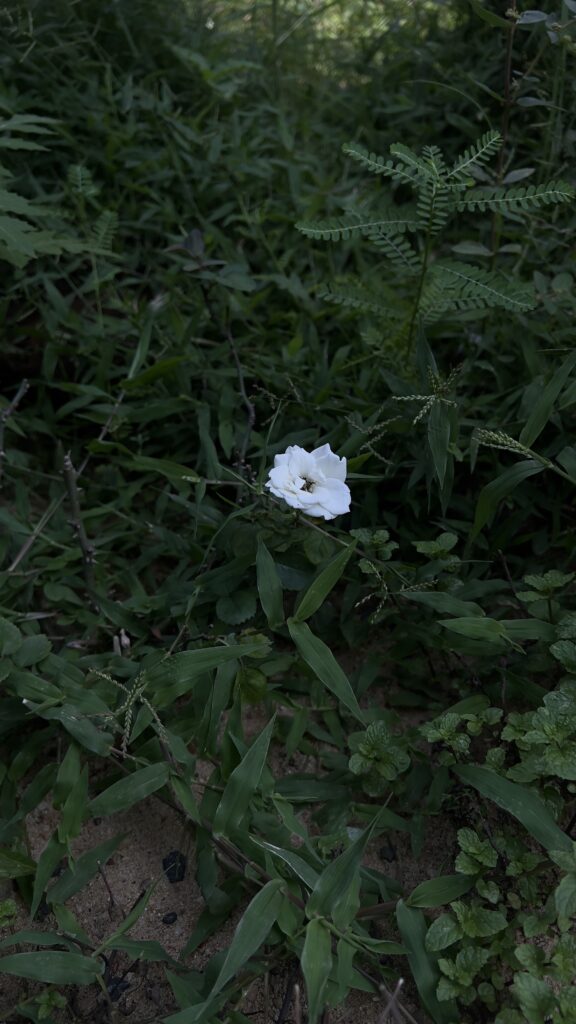
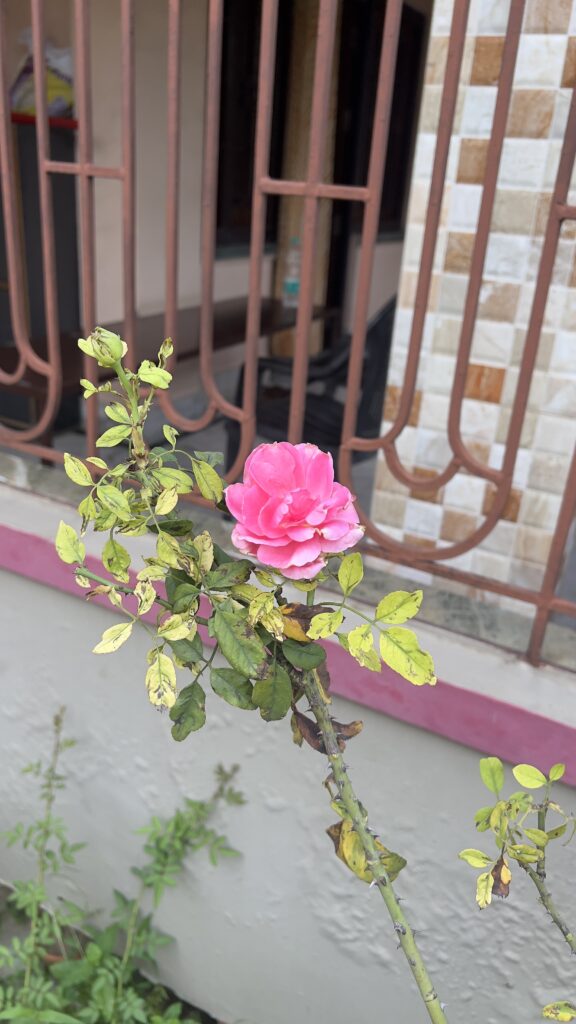
Rose, commonly known as the Indian cabbage rose, is a herbaceous plant that typically grows as a small shrub. Cultivated extensively worldwide for both cosmetic and medicinal purposes, it reaches an approximate height of 1.5 to 2 meters, though some varieties can grow up to 7 meters tall. Roses are often planted for their fragrant flowers, which are commercially utilized.
This woody, thorny perennial has alternately growing leaves with sharply toothed, oval-shaped leaflets. Its fleshy, edible fruit, known as rose hip, ripens to maturity and is also used in various applications. Roses are highly hybridizable, resulting in numerous garden varieties. India alone boasts nearly 150 original rose varieties and over 2,500 hybrids.
Native to Persia, roses are commercially cultivated in Bulgaria, Italy, Spain, and France, among other regions. In India, they are extensively grown in states like Kashmir, Bihar, Uttar Pradesh, and Punjab. The distinct fragrance of Bulgarian and Indian roses is attributed to their specific soil and climatic conditions. Indian roses thrive particularly well in the cooler and temperate regions of the country.
Medicinal Uses:
- Heart Health: Roses can be beneficial for heart disease and may help in managing high blood pressure.
- Wound Healing: A paste made from dried rose petals can be applied to wounds for faster healing.
- Sweating: Applying a paste of rose petals to the body helps regulate excessive sweating and imparts a pleasant fragrance.
- Eye Care: Rose petal extract, used as drops or an eye wash, can relieve burning sensations due to its antiseptic properties.
- Digestive Health: A dried rose petal paste can aid in managing gastritis and duodenal ulcers, typically consumed in a 5-gram dose with milk.
- Constipation: A decoction made from rose buds (20-30 ml) can help alleviate constipation.
- Diarrhea and Colic: Rosehip tincture acts as an astringent, managing diarrhea and relieving colic pain.
- Sore Throats: An infusion made from rose petals can be used as a gargle to soothe sore throats.
- Skin Care: Rose essential oil creams are effective for dry or inflamed skin due to their antibacterial, antiseptic, and anti-inflammatory properties.
- Vitamin C: The dried fruit of wild rose contains three times more vitamin C than citrus fruits, helping to prevent scurvy.
- Herbal Tea: Rose petal tea helps control acidity, alleviates burning sensations, combats oral dryness, and fights intestinal infections.
- Aromatherapy: Rose essential oil is used in aromatherapy to aid with insomnia and regulate blood pressure.
Additionally, rose extract and oil are extensively used in the cosmetic industry, featuring in products such as soaps, body washes, perfumes, and body sprays.
Papaya:
Mango
Banana:
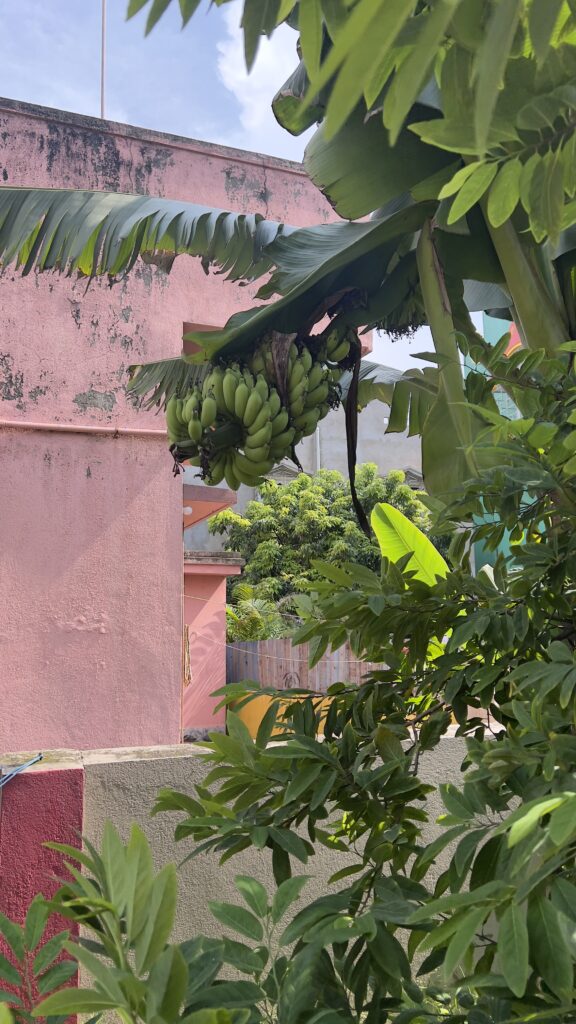
Thank you for reading my blog this far. By now you will have realised the immense medicinal values and use cases of plants that are just a foot away from my grandparents doorstep. Sure, maybe a single leaf may not hold all the medicinal values listed above, but it is definitely a start.
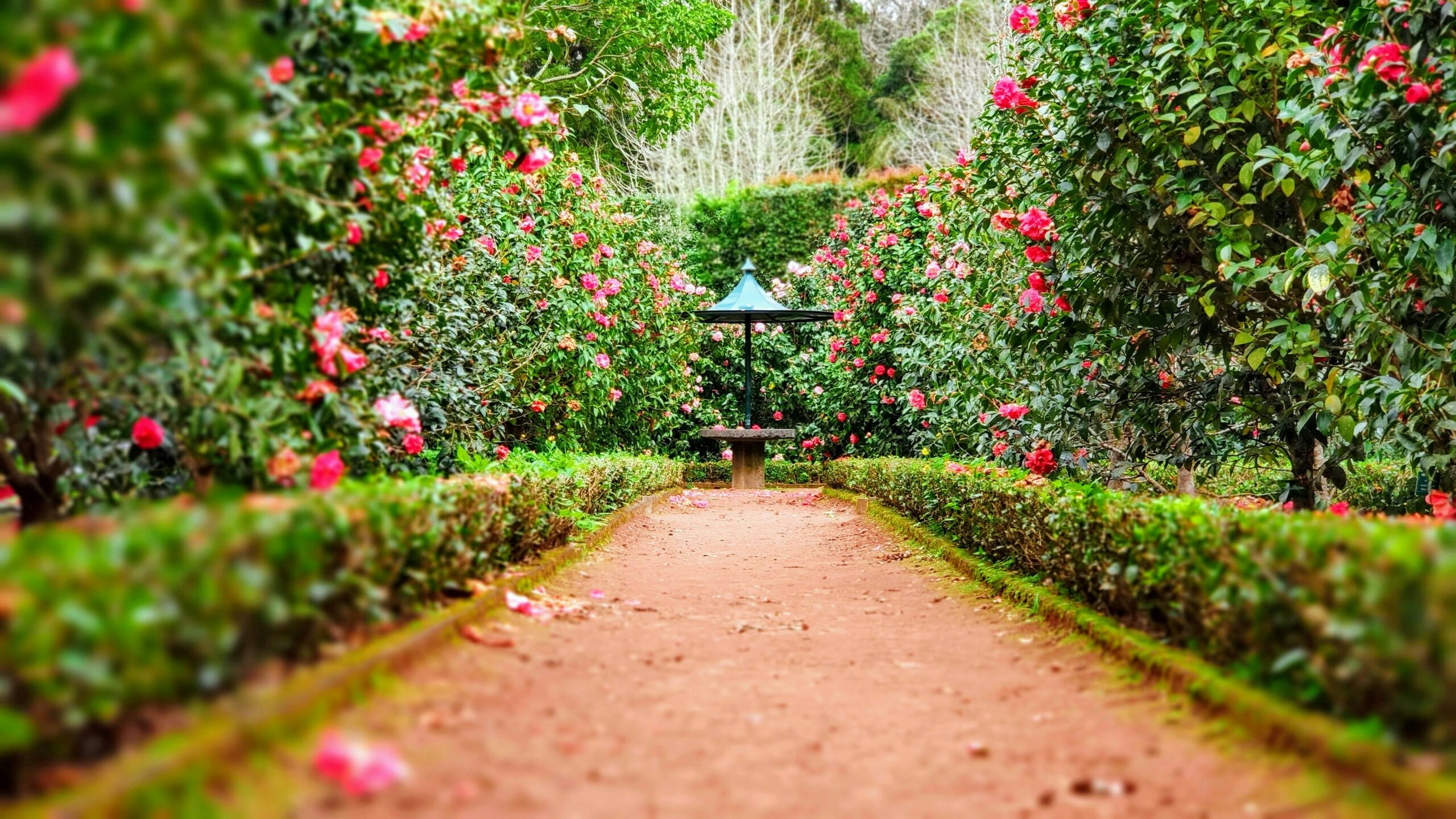
No responses yet